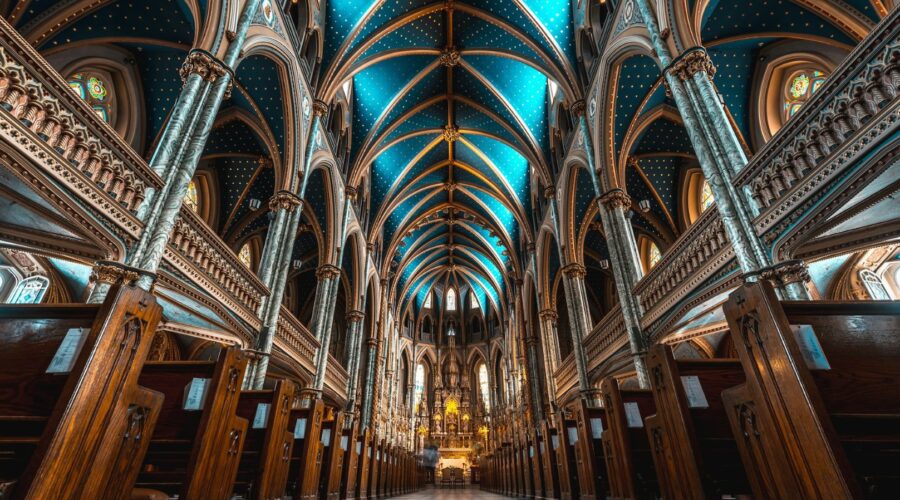Your cart is currently empty!
Discover the Enchanting History of the Church of the Rock: An Architectural Masterpiece

Introduction
Nestled amidst the tranquil landscapes of southern Cappadocia, Turkey, lies the remarkable Church of the Rock, a captivating monument that embodies the rich cultural heritage of the region. Carved into the volcanic cliffs along the Göreme Valley, this ancient sanctuary offers a breathtaking glimpse into the architectural ingenuity and religious devotion of a bygone era.
History and Significance
The Church of the Rock is believed to have been constructed in the 9th or 10th century A.D., during the Byzantine period. It served as a place of worship for the local Christian community and became an important center of monastic life. The church’s strategic location on the Silk Road ensured a steady stream of travelers and pilgrims, contributing to its growing significance.
Architectural Marvel
The most striking feature of the Church of the Rock is its unique architectural style. The entire structure is carved directly into the soft volcanic rock, creating a harmonious blend of nature and architecture. The exterior facade boasts intricately carved reliefs depicting biblical scenes and religious figures.
Interior Sanctuary
The church’s interior is equally impressive. The spacious main chamber is adorned with vibrant frescoes, which have been preserved in remarkable condition over the centuries. These frescoes depict biblical narratives, saints, and scenes from the life of Jesus Christ.
Chapel of Saint Basil
Adjoining the main chamber is the Chapel of Saint Basil, a smaller chapel dedicated to the renowned saint. The chapel’s walls are covered in stunning frescoes, including a captivating portrayal of Basil’s life and miracles.
Frescoes and Iconography
The frescoes within the Church of the Rock are among the finest examples of Byzantine art in Cappadocia. They depict a wide range of religious themes and demonstrate the extraordinary skill of the artists who created them.
Biblical Narratives
Many of the frescoes depict scenes from the Bible, such as the birth of Jesus Christ, his crucifixion, and his resurrection. These images served as visual aids for illiterate viewers and helped to convey the teachings of the Christian faith.
Saints and Martyrs
The frescoes also feature numerous saints and martyrs, who were revered by the local community. These figures are depicted with halos and other symbolic attributes, representing their holiness and sacrifice.
Monastic Life and Community
In addition to its architectural and artistic significance, the Church of the Rock also played an essential role in monastic life. Monks and nuns resided in the cave dwellings surrounding the church, dedicating their lives to prayer, study, and manual labor.
Monastic Complex
The monastic complex includes a series of interconnected caves and tunnels, which provided living quarters, storage areas, and workshops for the monks. Visitors can still explore these spaces today, gaining insight into the daily lives of these devoted individuals.
Restoration and Preservation
Over the centuries, the Church of the Rock has undergone several restoration and preservation efforts to protect its priceless frescoes and architectural integrity. In the 1980s, the church was declared a UNESCO World Heritage Site, recognizing its outstanding universal value.
Tourism and Accessibility
Today, the Church of the Rock is one of the most popular tourist destinations in Cappadocia. Visitors can marvel at the architectural splendor, explore the cave dwellings, and immerse themselves in the rich history of this ancient monument. The church is easily accessible from the nearby town of Göreme, and guided tours are available for a deeper understanding of its significance.
Tips for Visitors
* Visit during the shoulder season (April-May and September-October) to avoid crowds and enjoy milder temperatures.
* Wear comfortable shoes as the terrain surrounding the church can be uneven.
* Bring a camera to capture the breathtaking views and intricate frescoes.
* Respect the sanctity of the church and refrain from making excessive noise or touching the frescoes.
* Consider booking a guided tour to gain valuable insights into the church’s history and architectural features.
Conclusion
The Church of the Rock stands as a testament to the artistic prowess, religious devotion, and cultural diversity that thrived in Cappadocia during the Byzantine period. Its stunning architecture, vibrant frescoes, and fascinating monastic history make it a must-visit destination for anyone interested in exploring the region’s rich heritage and natural beauty.